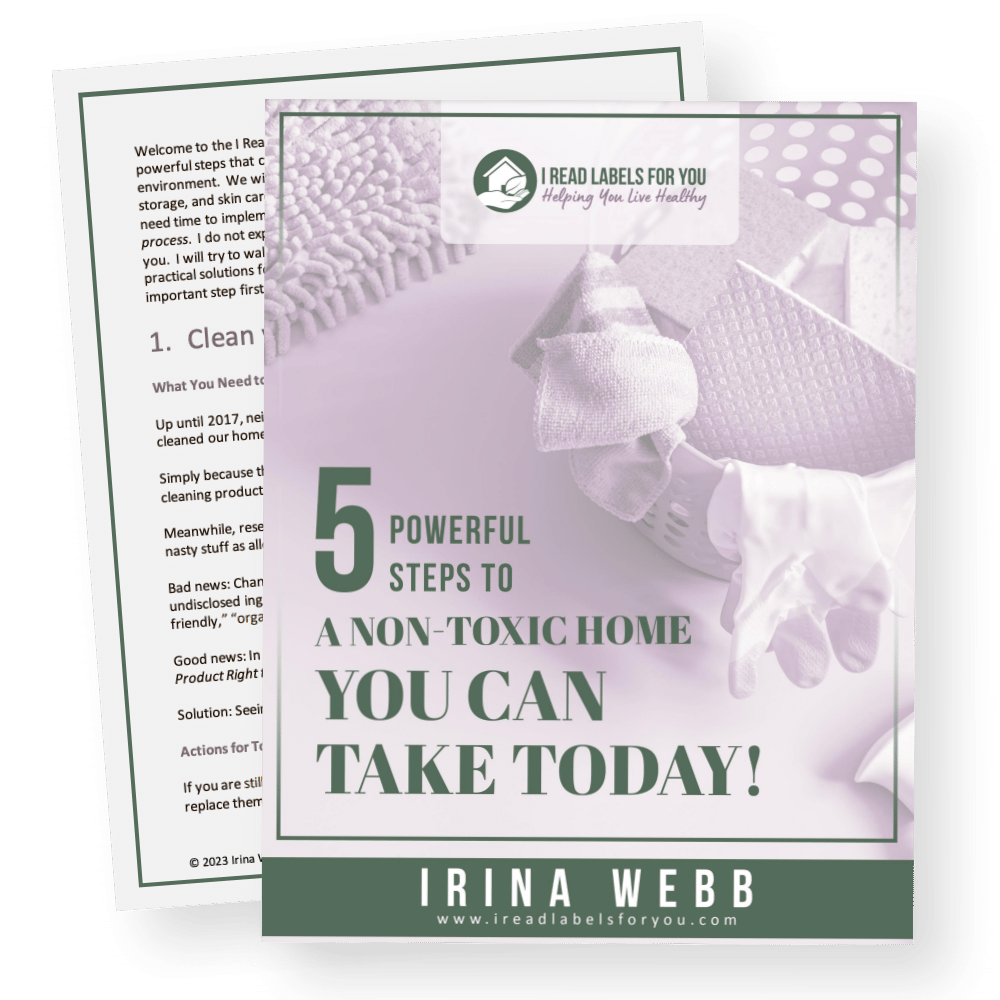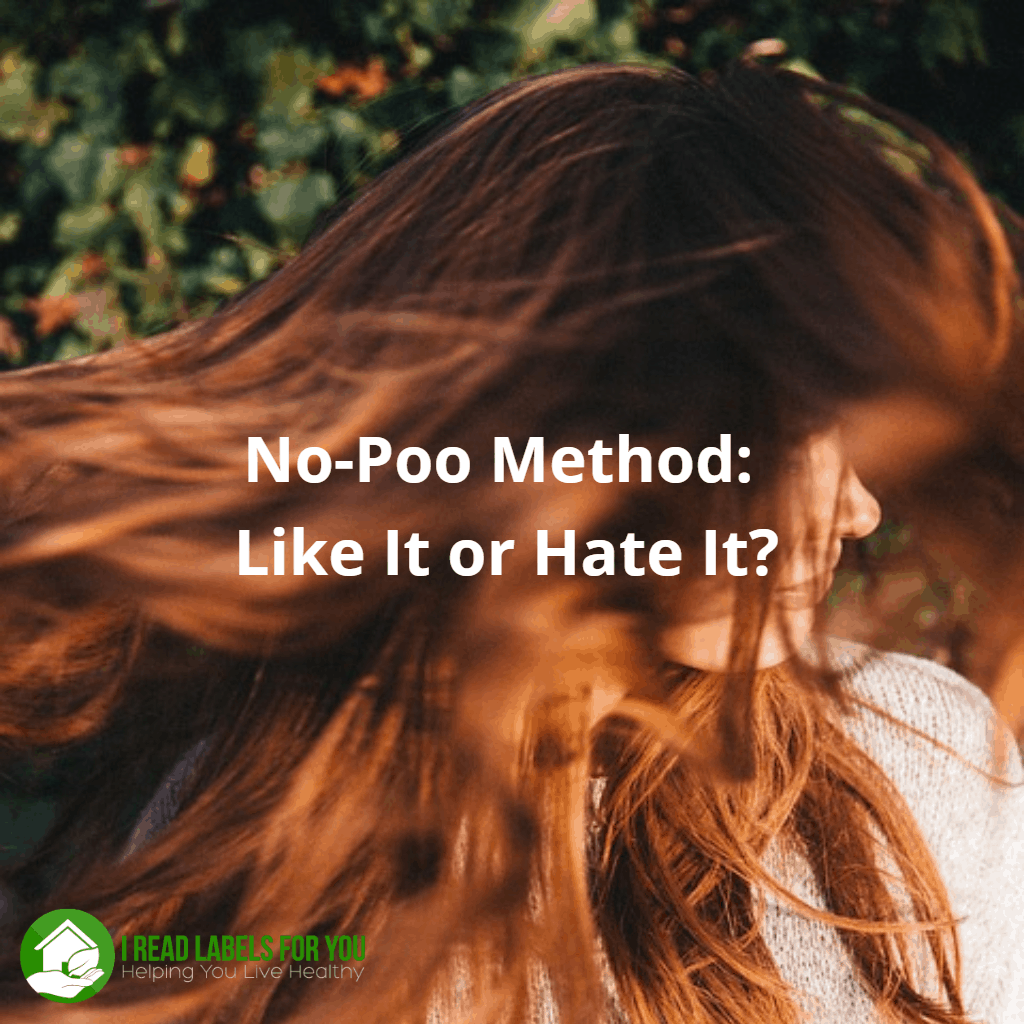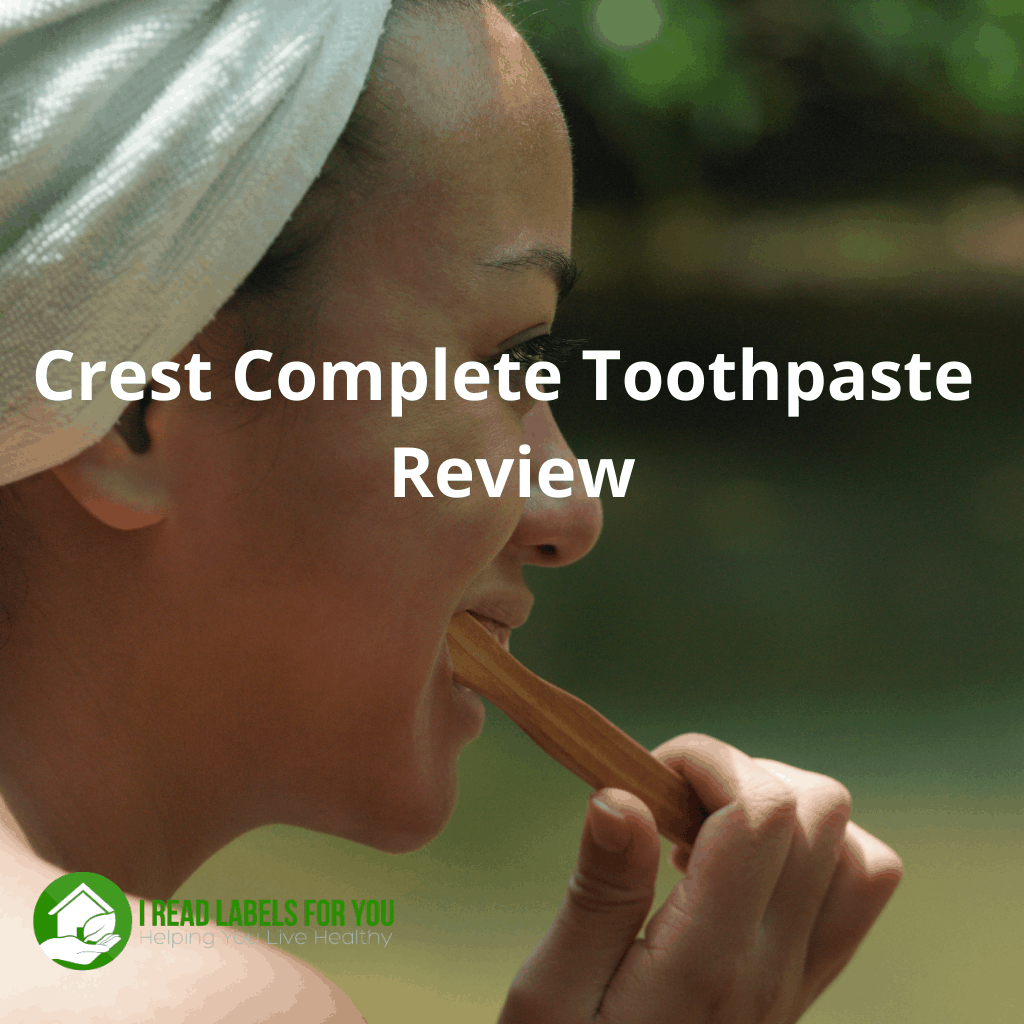RiseWell Hydroxyapatite Toothpaste Review

With tremor in my knees, I slide into the dentist chair. With outward confidence befitting an adult, I am still a child on the inside wishing to be as far away from the dentist’s office as possible. A few minutes later I rise with a sigh of relief – my teeth are healthy! No need to come back … well, not for another six months, but that is so far ahead! Feeling victorious, I renew the promise to myself to do my best to keep my oral health up to par. In this review, you will learn about a non-toxic toothpaste that I have been using lately. The best thing about it is that this hydroxyapatite toothpaste is a fluoride-free and remineralizing toothpaste. Keep reading to find out how it remineralizes teeth.
What to avoid in toothpastes
First, a toothpaste with surfactants, i.e. foaming cleansers or detergents, is not a safe toothpaste. Thus, many toothpastes contain sodium lauryl sulfate (SLS) or other harsh surfactants that do not have any health safety data available or no long-term safety data. Besides, they do not have any benefit for teeth but are there just to help the toothpaste foam.
Secondly, some toothpastes have clay which I consider rather controversial. Because clay comes from the earth, it may contain lead. Therefore, while it is acceptable for adults, I advise against clay in toothpaste for kids.
Additionally, synthetic dyes, ethoxylated ingredients, quaternary ammonium compounds (“quats”), preservatives (including even parabens), and flavors (as a mixture of undisclosed ingredients) do not belong in a non-toxic toothpaste.
So, how safe is hydroxyapatite toothpaste?
Fluoride versus hydroxyapatite toothpaste
Even though fluoride (chemical name “fluorine”) has been a useful instrument in cavity prevention and enamel remineralization, it is fatal in big doses. Also, scientists express concerns over the fluorosis risks that fluorine poses. For instance, the symptoms of fluorosis include white, yellow, and brown stains, surface irregularities, and even pits. Nowadays, with multiple exposures to fluoride in water, diet, and with the usage of both prescription and over-the-counter fluoride products, total fluoride intake can easily approach dangerous levels.
Hence, there is a need for alternative and effective non-fluoride agents that can effectively prevent cavities. For example, multiple studies show that hydroxyapatite (HAP) can serve as an effective remineralizing agent in fluoride-free toothpastes.
To clarify, hydroxyapatite is a mineral part of human bone and teeth. In fact, hydroxyapatite makes up about 97% of our enamel, 70% of our dentin, and 60% of our bones (source). Consequently, it is one of the most biocompatible and bioactive materials and is widely applied to coat artificial joints and tooth roots.
Actually, it started with NASA using it as a remineralizing agent for astronauts because they experienced mineral loss in their teeth and bones due to zero gravity. To specify, it works by filling micropores on demineralized tooth surfaces. Thus, hydroxyapatite has significant remineralizing effects on small cavities and good results on the sensitivity of the teeth. In short, hydroxyapatite toothpaste can be an answer to our search for a remineralizing toothpaste without fluoride.
By the way, I think this is the time to empathize that I am not a dentist and my advice is based on my best attempts to understand scientific studies. Further, whether you should you use a toothpaste with fluoride or hydroxyapatite should be between you and your dentist. Please read my post about hydroxyapatite that summarizes scientific studies that I read on this ingredient.
Non-toxic toothpaste and oral health
Without a doubt, it is great if you switched over from a toothpaste with the above-mentioned ingredients to a safe toothpaste without them. However, does the fact that your oral product is non-toxic automatically mean that it is effective? Unfortunately, the answer is no. In other words, some safe toothpastes have very few beneficial ingredients or none whatsoever. Therefore, I am always on the lookout for a product that will not only be non-toxic, but also effective.
So, it is my pleasure to introduce to you a fluoride-free toothpaste that I am using now. It is RiseWell hydroxyapatite toothpaste.
Ingredients in the RiseWell hydroxyapatite toothpaste for adults
The ingredients in this remineralizing toothpaste are as follows:
Silica, Sorbitol, Glycerin, Xylitol, Hydroxyapatite, Calcium Carbonate, Propanediol, Potassium Cocoate, Stevia Rebaudiana Extract, Mentha Arvensis (Wild Mint) Oil, Mentha Piperita (Peppermint) Oil, Echinacea Purpurea Extract, Cinnamomum Cassia (Cinnamon) Bark Extract, Citrus Aurantium Dulcis (Orange) Peel Oil, Citrus Limon (Lemon) Peel Oil, Melaleuca Alternifolia (Tea Tree) Oil, Cellulose Gum, Sodium Gluconate, Menthol, Thymus Vulgaris (Thyme) Extract, Erythritol, Xanthan Gum, Eucalyptus Globulus Extract, Illicium Verum (Anise) Extract (source).
So, let’s look at the ingredients of this non-toxic toothpaste one by one.
Silica and calcium carbonate in this hydroxyapatite toothpaste
Both ingredients are gentle scrubbers that clean your teeth without damaging or stripping the enamel.
First, silica, aka sand, is a natural part of the Earth’s crust and acts as an anticaking agent in food with no known adverse health effects. To clarify, in toothpastes it serves as a polishing agent that removes plaque from teeth in a gentle fashion.
Secondly, studies show that calcium carbonate can be helpful in remineralization of teeth.
Hydroxyapatite and glycerin
Without a doubt, hydroxyapatite is what makes this hydroxyapatite toothpaste special. As I mentioned above, there is a body of scientific evidence that shows that it can restore tooth enamel. Since it is the same mineral that makes up your teeth and bones, HAP remineralizes your teeth the way your body does naturally. Also, you can read more about research on this ingredient in my post about hydroxyapatite.
For the most part, glycerin is a safe ingredient that keeps your toothpaste from drying out. RiseWell uses glycerin that is derived from non-GMO corn. Nevertheless, you might have heard from non-scientific sources that it coats teeth, preventing remineralization.
First, glycerin is not a varnish, it is highly soluble (source). In other words, even if it is left on your teeth from your toothpaste, it would dissolve in your saliva. Also, as a result of my experience of helping manufacturers develop cosmetic products, I can tell you ingredients interact within a formulation. That is to say, glycerin alone is not an indication that a toothpaste will have ill effects on your teeth. It is best to look at the whole formulation because other ingredients, such as silica in this non-toxic toothpaste, may offset its potential coating properties, if there were any. In addition, it has some antibacterial properties, so it is a welcome ingredient in a safe toothpaste.
Stevia, sorbitol, erythritol, and xylitol
To begin with, these ingredients in the RiseWell hydroxyapatite toothpaste are food-grade plant-based sweeteners.
In addition, studies show that xylitol has no ill effects on the teeth associated with sugar. Instead, it actually helps reduce cavities and heal early cavities. To clarify, it does that by starving harmful bacteria of their food source, thereby reducing bacteria’s ability to produce the acids that lead to cavities.
Furthermore, there is evidence that sorbitol and erythritol decreased weight of dental plaque and adherence of common streptococcal oral bacteria to tooth surfaces, and inhibited the growth and activity of associated bacteria. In fact, some studies concluded that erythritol demonstrated a better efficacy than sorbitol and xylitol in maintaining and improving oral health.
And finally, is stevia harmful for our teeth? This international study shows that stevia does not contribute to the development of cavities.
Potassium cocoate, sodium gluconate, and propanediol
First, potassium cocoate and sodium gluconate in RiseWell hydroxyapatite toothpaste are some of the safest surfactants and preservatives respectively. Thus, potassium cocoate is saponified coconut oil, a traditionally safe way to make natural soap. You can read more about how saponified soap is made in my How to Buy a Truly Non-Toxic Soap post.
Secondly, sodium gluconate is a salt of gluconic acid that is produced from glucose. You can also find it as a food additive. The FDA does not have any restrictions on its use in food (source).
Thirdly, propanediol refers to 1,3-propanediol, not propylene glycol, which is 1,2-propanediol, and functions as a solvent. Unlike propylene glycol, propanediol is not in the American Contact Dermatitis Society Core Allergen Series. Also, there is no association of this ingredient with irritation or allergic contact dermatitis. According to a Cosmetic Ingredient Review (CIR) report, researchers found it to cause irritation only in concentrations as high as 75%.
Xanthan gum and cellulose gum
These ingredients are popular in food and are used for their thickening properties. Even though they have nothing to do with the health of teeth, I believe they are safe ingredients in this non-toxic toothpaste. In fact, they help this fluoride-free toothpaste stay on the toothbrush and resemble conventional toothpaste in texture.
Botanicals in the RiseWell hydroxyapatite toothpaste
The rest of the ingredients in this remineralizing toothpaste are essential oils and plant extracts.
For example, wild mint, peppermint, tea tree oils, and cinnamon and thyme extracts freshen breath and help kill bacteria. Additionally, the essential oils have antioxidant and anti-inflammatory properties.
I wish, however, they were organic. But I also understand that since organic essential oils are more expensive, that would increase the cost of the RiseWell products.
RiseWell hydroxyapatite toothpaste for kids
It is great to know that RiseWell has remineralizing toothpaste for kids, too. Here are the ingredients:
Silica, Sorbitol, Glycerin, Xylitol, Hydroxyapatite, Calcium Carbonate, Propanediol, Vanilla Planifolia Fruit Extract, Potassium Cocoate, Stevia Rebaudiana Extract, Erythritol, Echinacea Purpurea Extract, Cellulose Gum, Gluconate, Xanthan Gum (source).
As you can see, the ingredients in this non-toxic toothpaste for kids are almost the same as those in the hydroxyapatite toothpaste for adults. That is to say, the major difference is that there are no essential oils and menthol in it.
It tastes good! My 7-year-old son liked its taste when he first tried this safe kids toothpaste.
No flavor in the RiseWell fluoride-free toothpaste
I would like to emphasize that RiseWell doesn’t use any flavors. If you read my blog often, you might know that I advocate against the use of fragrance as a mixture of undisclosed ingredients. And that applies to so-called natural fragrance. Despite the assurances of natural fragrance safety from the manufacturers, we still do not know what ingredients their natural fragrance has.
To clarify, flavors are just fragrances which are mixtures of undisclosed chemicals. When it comes to new flavors, they must go through an approval process by the FDA, unless they get GRAS status. That is to say, many food flavors can achieve GRAS status if qualified experts deem them safe. Often those experts are representatives of the US Flavor and Extract Manufacturers Association (source).
Moreover, flavors contain ingredients that are not intended to provide taste, such as emulsifiers, solvents, preservatives, and flavor modifiers (source).
As a result, I am not a big fan of flavors and try to avoid them if possible. Therefore, I was very happy to hear that RiseWell refuses to use flavors in their non-toxic toothpaste as well. They could not get a list of ingredients either, so they refused to compromise.
Why I like RiseWell hydroxyapatite toothpaste without fluoride
Above all, I like that we don’t have to make a choice between effectiveness and safety, because this hydroxyapatite toothpaste is two-in-one.
I also like that that this safe toothpaste stays on the toothbrush and spreads around the mouth well.
And finally, I like its cap – it is so easy to open and close the tube. This sounds silly, but when you try it, you’ll see what I mean!
A few words about RiseWell floss
Besides toothpaste, RiseWell offers a floss that I like a lot. One of the main reasons I like it is that the floss is coated with hydroxyapatite, which makes it a remineralizing floss.
Where to buy the best remineralizing toothpaste
In conclusion, to buy this non-toxic toothpaste, visit RiseWell website. Please use the discount code IREAD10 at the checkout to get 10% off.

Download The Free Guide!
5 Powerful Steps To A Non-Toxic Home
Join our informed consumer community and get our free guide the “5 Powerful Steps To A Non-Toxic Home”.

 Written by
Written by 





Wondering if you still recommend this toothpaste and especially the floss-many thanks.
Hi Penny! Thank you for reaching out to I Read Labels for You! We still recommend RiseWell toothpaste. We haven’t used their floss and as of now have no comment on it. We hope this helps!
I seen this questions posted a few times on here without answer, Risewell vs Boka, are there any advantages or disadvantages to using one or the other.
Here are the list of ingredients of each for comparison.
Risewell Wild Mint:
*Silica
*Sorbitol
*Glycerin
*Xylitol
*Hydroxyapatite
*Calcium Carbonate
*Propanediol
*Potassium Cocoate
*Stevia Rebaudiana Extract
*Mentha Arvensis (Wild Mint) Oil
*Mentha Piperita (Peppermint) Oil
*Cinnamomum Cassia (Cinnamon) Bark Extract
*Citrus Aurantium Dulcis (Orange) Peel Oil
*Citrus Limon (Lemon) Peel Oil
*Melaleuca Alternifolia (Tea Tree) Oil
*Cellulose Gum
*Sodium Gluconate
*Menthol
*Thymus Vulgaris (Thyme) Extract
*Erythritol
*Xanthan Gum
*Eucalyptus Globulus Extract
*Illicium Verum (Anise) Extract
________________________________
Boka Ela Mint:
*Water
*Vegetable Glycerin
*Hydrated Silica
*Sorbitol Powder
*Silica
*Hydroxyapatite (Nano)
*Sodium Benzoate
*Sodium Lauroyl Sarcosinate
*Mentha Piperita Essential (Peppermint) Oil
*Mentha Viridis (Spearmint) Oil
*Illicium Verum (Star Anise) Oil
*Gaultheria Procumberis (Wintergreen) Oil
*Xylitol
*Xanthan Gum
*Stevia Rebaudiana Extract Powder
*Methylsulfonylmethane
*Aloe Barbadensis (aloe Vera) Leaf Juice
*Sodium Bicarbonate
*Camellia Sinensis (Green Tea) Leaf Extract
*Cucumis Sativus (Cucumber) Fruit Extract
*Persea Gratissima (Avocado) Fruit Extract
*Mangifera Indica (Mango) Fruit Extract
*Menthol
*Elettaria Cardamomum Miniscula Seed (Cardamom)
*Potassium Chloride
Hi, Jayson! Thank you for reaching out to I Read Labels for You! We will be happy to help you! Please check out this link for steps you can take to get an email product review: https://ireadlabelsforyou.com/pick-brain-product/
How about Dr. Brite Extreme Whitening w/ Activated Charcoal. I was thinking of trying that one.
Hi, CC! Thank you for your question! We have reviewed Dr. Brite multiple times. You can purchase it and other Dr. Brite dental products with our discount on iHerb that sells in 186 countries: https://ireadlabelsforyou.com/product/best-brands-sold-on-iherb-website/
Thx for this article! Is there any risk of lead in Hydroxyapatite toothpastes that you know of? I use Risewell for my 2.5 year old but she loves the flavor so much we are having trouble teaching her to spit out out 🤪
Hi, Janie: I have not found any information that hydroxyapatite is a concern for lead contamination. ~Irina
HI, I absolutely love the sound of this. Do you know if I can get this delivered to the UK and if not what is the best alternative i can buy here?
Hi, Claire: I don’t think they ship to the UK. I do evaluate UK products in private consultations though. ~Irina
hi there! bokas ela mint has a pretty similar ingredient list that’s pretty straight forward. what’s your thought on theirs vs risewell? trying to decide which to get
Hi Irina,
We have been using a similar toothpaste from Boka. What is your opinion on it’s ingredients?
Thanks,
Debbie
Hi, Debbie, you might want to ask them what the ingredients are of their natural flavors. ~Irina
Thank you! Will try this one! I have seen it but didn’t look into it…
You are welcome, Julia! Have you tried it yet? What do you think?
Hello,
Just FYI: I tried the IREAD10 code on my Risewell checkout page (for the toothpaste), a few minutes ago and got “Unable to find a valid discount matching the code entered”.
I will try again in a day or so.
Sorry to hear that. It worked for many other people. Could you email me a screenshot of the error and of where you’re entering the code? I can email you my screenshot as well. Thank you! My email address is irina “at” ireadlabelsforyou.com ~Irina
The promo code did not work for me as well! Is there another one I can try?
Thank you,
Megan
Hi, Megan: if you chose a subscription, the discount code won’t work. Otherwise, it should work. You can email me a screenshot of where you enter the code so I can help you troubleshoot. My email address is irina at ireadlabelsforyou.com Thank you.
This is really interesting because I’ve recently tried and become very curious about toothpaste with hydroxyapatite. I purchased a tube of CariFree CTx4 Gel 1100 from Amazon. It’s a bit more expensive than I’d like. It also does have flouride, which my dentist told me I should use, but the thing that’s curious to me is that it says nano hydroxyapatite. I know nano particles are a bit controversial, and should be avoided in sunscreen, as well as any powder that could be inhaled, etc. Do you know if the hydroxyapatite in the toothpaste you’re suggesting here is small enough to be considered nano, and what do you think about that?
Hi, Matt: The size of the particles of RiseWell hydroxyapatite is more than 5 micron. 5 microns are 5,000 nm and to be considered nano, it has to be 100 nm. Does it make sense? ~Irina
Yes, thank you. That was a very quick answer! Do you think that the use of nano particles in this case could be beneficial, is it definitely unsafe, or do we not really know enough about it for it to be considered safe or unsafe?
Hi, again! I was going back forward on this question and read many scientific studies that I compiled here: https://ireadlabelsforyou.com/hydroxyapatite-tooth-remineralizer/ Please read them, too. The last two studies test toothpastes without nano-hydroxyapatite and find them effective. ~Irina
I’m confused – if it has to be 100 nm to be considered nano, and the Risewell particles are 5,000 nm – doesn’t that make them nano particles vs non-nano particles?
Hi, Teri: 5,000 is bigger than 100, which means that Risewell particles are much bigger than 100 to be considered nano. Nano means very small, 100 nm or smaller. does it make sense? ~Irina
The website says it’s “wild mint flavored”. Which I would prefer to no flavor but above you said they weren’t flavored??
Hi, Emily: They are flavored with essential oils only that are listed in the ingredients. No flavors as a mixture of undisclosed ingredients. Thank you for asking. ~Irina